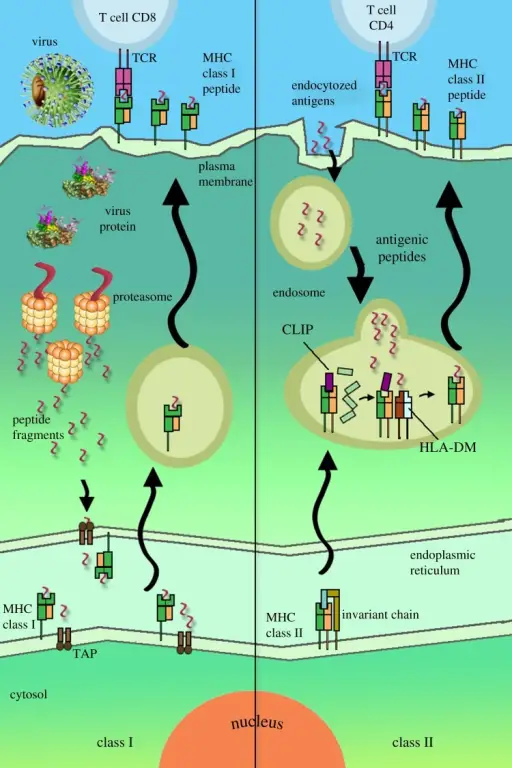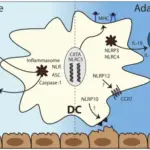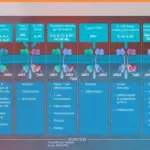
Antigen-processing pathways in the cell. Left: intracellular pathway. Protein is cleaved into oligopeptides in the proteasome, the peptides enter the endoplasmic reticulum (ER) via TAP protein and bind to MHC class I, and the complex peptide–MHC protein is presented on the cell surface. Right: extracellular pathway. Protein is endocytozed, cleaved into oligopeptides in the endosome, bound to MHC class II protein and presented on the cell surface. In the ER, MHC class II molecules are adjoined to a specific peptide, known as invariant chain (Ii). It blocks the binding cleft of the MHC molecule, thereby preventing the binding of endogenous peptides. In the endosome, the Ii is initially cleaved to CLIP peptide, and is then replaced by an exogenous peptide. The process is facilitated by the HLA-DM molecule. T-cell epitope vaccine design by immunoinformatics. Patronov A, Doytchinova I - Open biology (2013). Not Altered. CC.
Major histocompatibility complexes (MHCs) are a group of genes that encode proteins on the cell surface that have an important role in immune response. Their main role is in antigen presentation.
Class I MHC molecules are cell surface recognition elements expressed on virtually all somatic cells. Each human cell expresses six MHC class I alleles.
Class II MHC molecules normally found only on professional antigen-presenting cells such as dendritic cells, mononuclear phagocytes, some endothelial cells, thymic epithelial cells, and B cells. There are six to eight MHC class II alleles.
MHC locus is a large locus on vertebrate DNA containing a set of closely linked polymorphic genes that code for cell surface proteins essential for the adaptive immune system.



